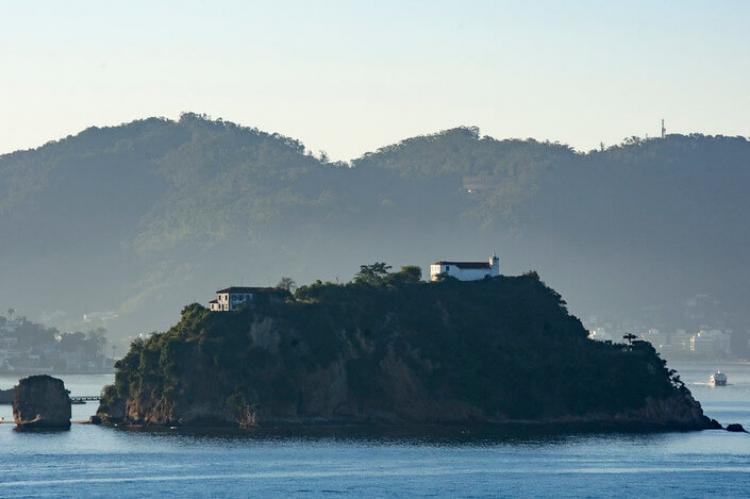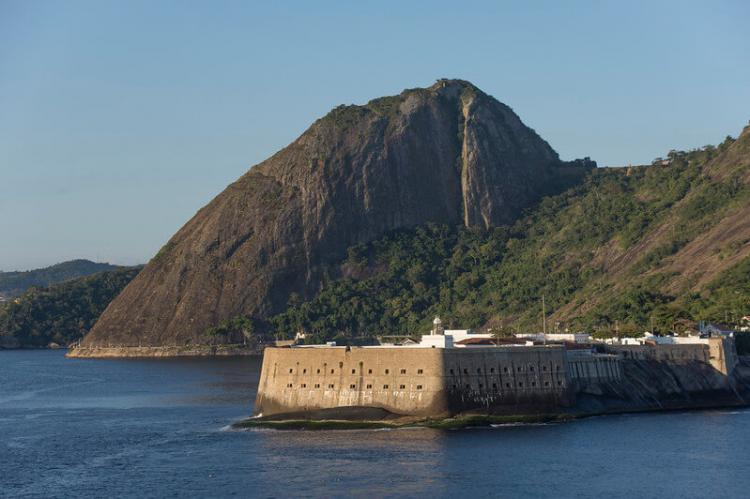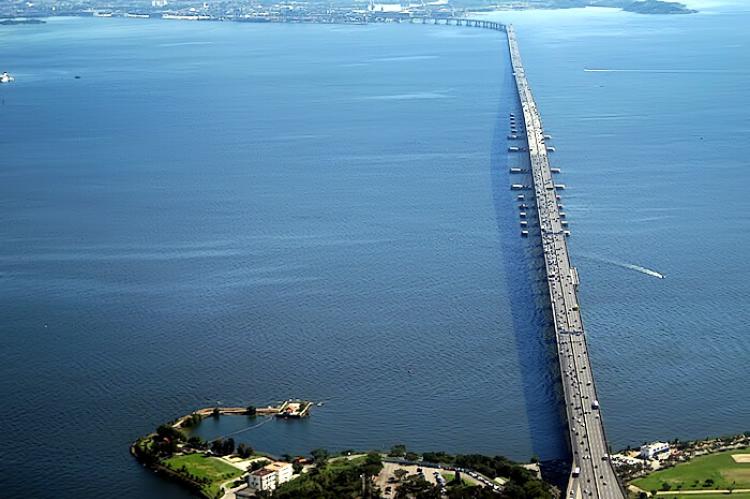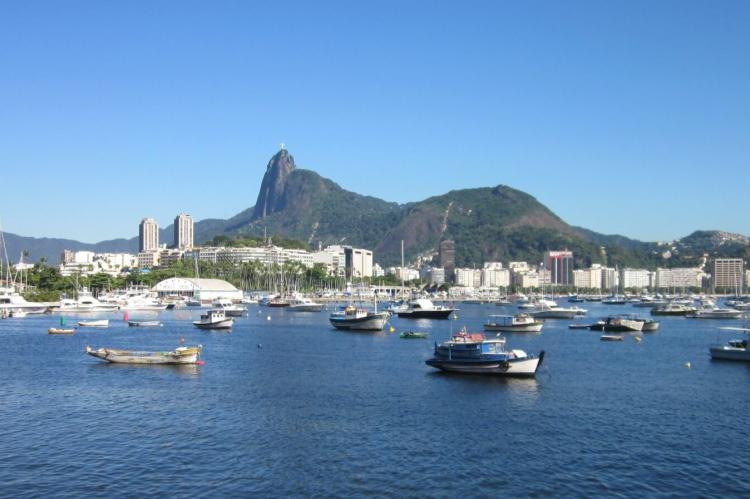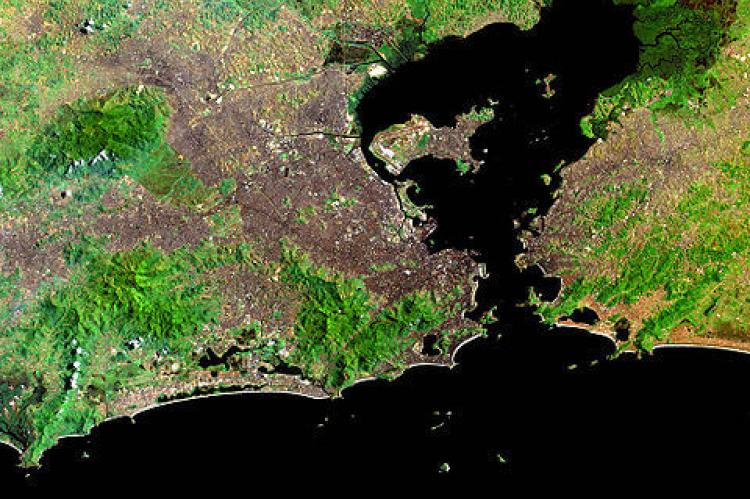Guanabara Bay: A Deep Dive into Brazil's Iconic Coastal Treasure
Guanabara Bay, a jewel of Southeast Brazil, is one of the country's most iconic and historically significant coastal landmarks. Situated in the state of Rio de Janeiro, this picturesque bay is renowned for its stunning natural beauty, strategic importance, and bustling life along its shores.
Guanabara Bay: Navigating the Depths of History, Ecology, and Urbanization
Guanabara Bay, a jewel of Southeast Brazil, is one of the country's most iconic and historically significant coastal landmarks. Situated in the state of Rio de Janeiro, this picturesque bay is renowned for its stunning natural beauty, strategic importance, and bustling life along its shores. Guanabara Bay, often overshadowed by the world-famous Rio de Janeiro, holds a rich history and ecological significance that warrant closer examination. This comprehensive overview explores the bay's geographical features, historical context, ecological challenges, and role in Brazil's cultural and economic landscape.
Geographical Features of Guanabara Bay
Guanabara Bay is the second largest bay in Brazil, after Todos os Santos Bay. The bay, spanning an area of approximately 412 square kilometers (159 square miles), has a perimeter of 143 kilometers (89 miles). Its entrance, about 1.6 kilometers (1 mile) wide, is flanked by the imposing Papagaio Peak and Santa Cruz fortress on the east and the iconic Sugar Loaf Mountain and São João fortress on the west. The bay is rimmed by the Serra do Mar mountain range, a prominent geographical feature that extends for 1,500 kilometers (932 miles) along the southeastern coast of Brazil.
What distinguishes Guanabara Bay is its vast size and remarkable depth, making it the deepest natural bay in Brazil and one of the deepest in the world. This depth has played a crucial role in the bay's historical and economic development, particularly in facilitating maritime activities. The bay's waters are dotted with more than 130 islands, including the notable Governador Island, Cobras Island, and Villegagnon Island, which contribute to the bay's unique landscape.
Historical Context and Human Settlement
Guanabara Bay's history is deeply intertwined with Brazil's history. When Europeans first arrived at the bay in January 1502, led by Portuguese explorer Gaspar de Lemos, they mistook it for the mouth of a large river, hence the name "Rio de Janeiro," which translates to "River of January." The bay was soon recognized for its strategic significance, leading to the establishment of the city of Rio de Janeiro on its western shore in 1565.
Over the centuries, Guanabara Bay became a focal point for maritime trade, defense, and settlement. The bay's natural depth made it an ideal location for the Port of Rio de Janeiro, one of Brazil's most important ports. The bay's shores are now home to several major cities and towns, including Rio de Janeiro, Duque de Caxias, Niterói, and São Gonçalo. The impressive Rio-Niterói Bridge also crosses the bay, a 13.29-kilometer (8.26-mile) structure that connects the cities of Rio de Janeiro and Niterói.
Ecological Significance and Environmental Challenges
Guanabara Bay once had a rich and diverse ecosystem, with extensive mangrove forests and abundant marine life. The bay's waters supported a variety of species, including dolphins, whales, and a myriad of fish species. The bay's mangroves served as vital breeding grounds for marine life, and the surrounding forests were teeming with biodiversity.
However, in recent decades, the bay has faced significant ecological challenges. Urbanization, deforestation, and pollution have severely affected the bay's environment. The rapid expansion of Rio de Janeiro and other cities around the bay has led to the destruction of mangrove forests and the contamination of the bay's waters with sewage, garbage, and industrial waste. Oil spills have further exacerbated the environmental degradation.
The impact on marine life has been profound. Once commonly seen in the bay, whales have largely disappeared, with only occasional sightings of Bryde's whales near the bay's entrance. The bay's population of botos, or river dolphins, is also in decline, facing threats from pollution and habitat loss. The decline in water quality and the loss of critical habitats have raised concerns about the future of the bay's ecosystem.
Cultural and Economic Importance
Despite its environmental challenges, Guanabara Bay remains Brazil's cultural and economic hub. The bay's shores are lined with important cultural landmarks, including the city of Rio de Janeiro, known for its vibrant culture, historic sites, and world-famous festivals such as Carnival. The bay also plays a central role in Brazil's economy, with the Port of Rio de Janeiro serving as a major gateway for international trade.
Guanabara Bay is also a center for transportation and infrastructure. The bay's islands host significant facilities, such as the Galeão —Antônio Carlos Jobim International Airport on Governador Island, one of Brazil's busiest airports. The Federal University of Rio de Janeiro's main campus is on Fundão Island, an artificial island created through land reclamation.
Conclusion
Guanabara Bay symbolizes both the natural beauty and the complex challenges facing Brazil today. As one of the country's most important coastal landmarks, the bay's history, geography, and ecological significance are deeply intertwined with the development of Rio de Janeiro and the surrounding region. However, the bay's environmental challenges underscore the need for sustainable management and conservation efforts to preserve its unique ecosystem for future generations. Guanabara Bay's story is of opportunity and responsibility, highlighting the delicate balance between development and environmental stewardship in one of Brazil's most iconic natural settings.
![Guanabara Bay (Brazil) by Zimbres [CC BY-SA 3.0 (https://creativecommons.org/licenses/by-sa/3.0)] Guanabara Bay (Brazil)](/sites/default/files/styles/large/public/guanabara_bay_brazil_opt%20%281%29.jpg?itok=VS5UDgdK)
